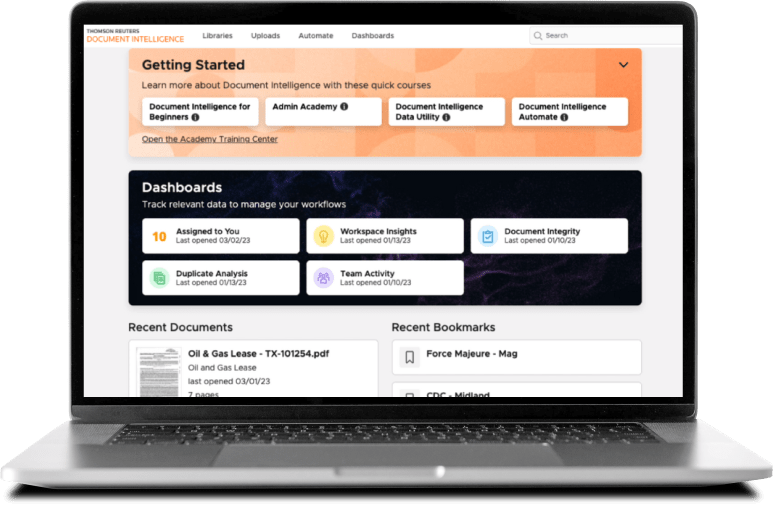In a recent interview, Nina Koteva, Product Manager for Document Intelligence, and Lea Strohm from the Data and Model Ethics team at Thomson Reuters, discuss how Document Intelligence is using Machine Learning (ML) to enable legal professionals to gain immediate insights from their contracts and documents. Koteva focuses on tooling for and integration of ML.
|
|
Strohm: What is Document Intelligence?
Koteva: You can think of Document Intelligence as a contract review tool – it enables legal professionals to search, analyze and gain immediate insights from all their contracts. Document Intelligence is right now powered primarily by ML models trained and built in-house by Subject Matter Experts (SMEs).
More on Document Intelligence |  |
Strohm: Why is AI a good technological solution? And could you explain a little bit what type of AI technologies you’re leveraging within Document Intelligence?
Koteva: AI can reach its full potential when the data is of high quality and volume. Document Intelligence provides both. Based on our use case with Document Intelligence, we have found that ML models are more efficient to build, easier to maintain, and perform better than other traditional engineering approaches.
Regarding your second question, we have developed several models. The output of some of them is almost directly exposed to our customers, while others remain completely hidden and are used only internally during processing. Some of these models are more traditional, such as Decision Trees and SVMs, while others use state-of-the-art technologies like LLMs and Generative AI.
Strohm: How does Document Intelligence work?
Koteva: One of the core components is a tool to enable our SMEs to take control of the whole model delivery lifecycle from labeling data all the way to the deployment of the model to production. We make our deployed models available through several interfaces, including an interactive application and APIs for programmatic access.
Strohm: Can you give us some more background on the SMEs’ roles in the technology?
Koteva: Our SMEs are fully behind the wheel. They are highly skilled legal professionals and therefore they know best what they need to see from the model in terms of quality. Thus, they are in control of the whole model creation lifecycle.
Strohm: Are there user experience steps that you’ve taken to enable these SMEs to trust the models?
Koteva: Trust is always a tricky point. We follow a human-in-the-loop approach, where SMEs play a crucial role in validation. For example, after the model is trained, we’ll have SMEs compare it to the golden truth. They can look at the overall performance and can zoom in and really drill down into the details.
Strohm: Last question. What is something you and your team are extremely excited about?
Koteva: Going back to the external facing application, we are really excited about the new initiative for drafting and the partnership with Microsoft Copilot. We are very eager to see how it’s going to come together.
Learn more about how Document Intelligence can help you advise with confidence, seize opportunities, mitigate risk and identify savings.
 | Want more on AI?See how Thomson Reuters is redefining the way you work with the power of generative AI. |












